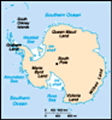The Argentine presence in the section began during the first decade of the 19th century; though some even affirm that it took place by the end of the previous century. However, navigators from other countries claimed the discovery of Antarctica for themselves. By the end of the 19th century the aid lent by Argentina to foreign expeditions, in particular that of Nordensjöld, Gerlache and Charcot, was properly appreciated. This included the assignment of Argentine place names to Antarctic geographic features, such as the Argentine Islands, Uruguay Islands, General Roca, Quintana, and others. In 1904 the permanent occupation began with the opening of Orcadas Base on Laurie Island. Argentina WAS THE ONLY NATION to have an Antarctic base for 40 years until the British built a base on the same islands. Argentina bases its claims on this
... read more



